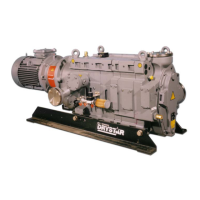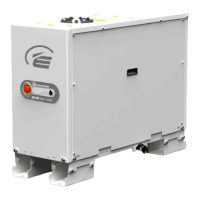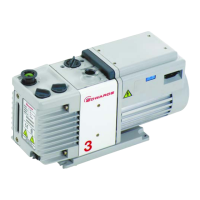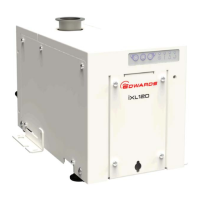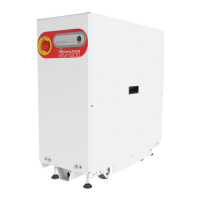A705-61-880 Issue M
Page 22 © Edwards Limited 2012. All rights reserved.
Edwards and the Edwards logo are trademarks of Edwards Limited.
Installation
3.13 Leak test the system
Leak-test the system after installation and seal any leaks found. Substances which leak from the system may
be dangerous to people and there may be a danger of explosion if air leaks into the system.
When supplied, the leak rate of the pump is tested to be less than 1 x 10
-3
mbar l s
-1
(1 x 10
-1
Pa l s
-1
,
2.1 x 10
-6
atm ft
3
min
-1
). The required leak rate for your system will depend on your safety and process
requirements.
3.14 Commission the pump
Note: To check the operating temperature of the pump, measure the temperature of the pump at the point shown
in Figure 1, item 3.
1. Isolate the pump from your process system.
2. Ensure that the gas-ballast flow valve (Figure 1, item 10) is closed.
3. Turn on the cooling-water supply, the shaft-seals purge air or nitrogen supply, the gas-ballast nitrogen supply
(if fitted) and your exhaust-extraction system. Ensure that the pressures and flow rates are as specified
in Section 2.
4. Check that there are no leaks in the water, air, nitrogen (if fitted) and exhaust-extraction system connections.
Seal any leaks found.
5. Switch on the pump.
6. Check that the pressure shown on your shaft-seals purge air or nitrogen pressure gauge is as specified
in Section 2.7. If necessary, adjust the pressure of the air or nitrogen supply.
7. Leave the pump to operate for approximately 30 minutes to allow the pump operating temperature to stabilise.
8. Check that the pump operating temperature is between 30 and 45 °C (86 and 113 °F).
9. Turn off the pump, the cooling-water supply, the shaft-seals air or nitrogen purge supply and the gas-ballast
nitrogen supply (if fitted).
Leak-test the system after installation and seal any leaks found to prevent the leakage of
dangerous substances out of the system and leakage of air into the system.

